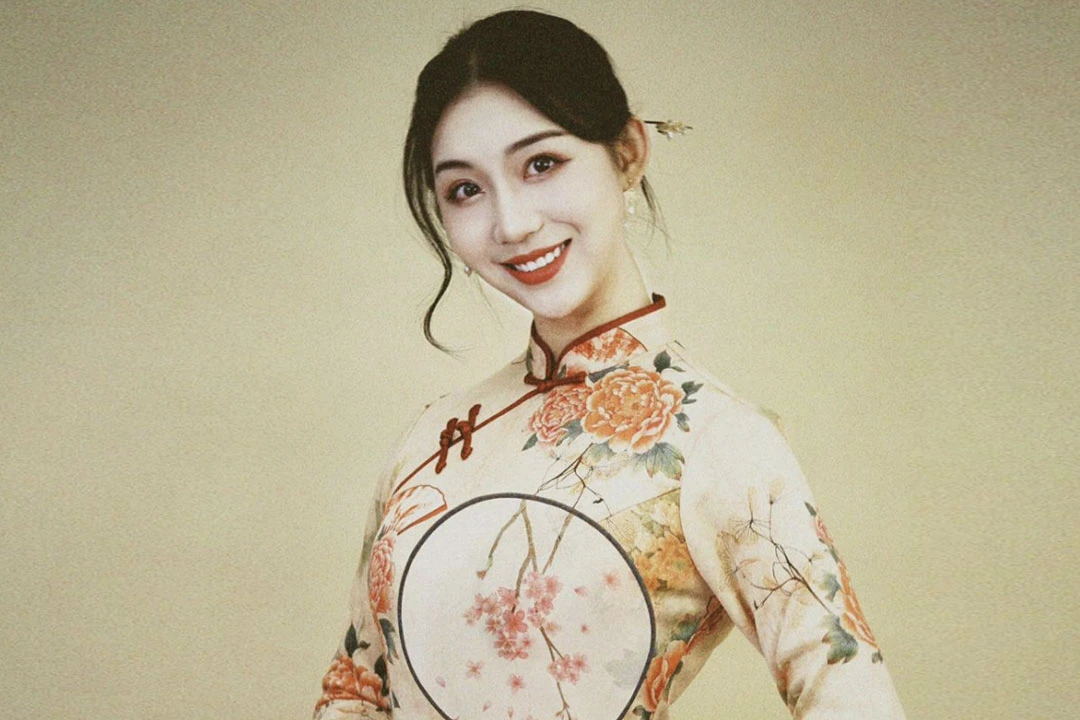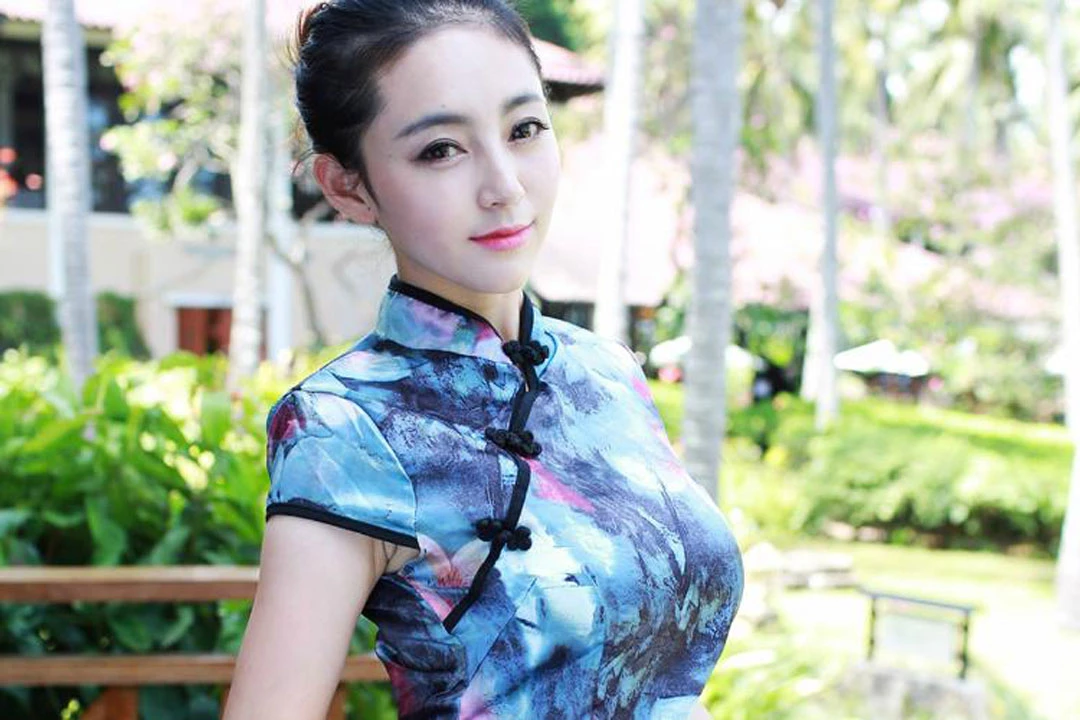In the realm of traditional Chinese fashion, the Qipao stands as a symbol of timeless elegance and cultural pride. At the heart of this exquisite garment lies a small but significant detail—the Qipao pankou, often referred to as the cheongsam button. In this comprehensive guide, we embark on a journey into the world of Qipao pankou, exploring its cultural significance, the craftsmanship behind its creation, and the evolution of cheongsam buttons over time.
I. The Qipao Pankou: A Symbol of Tradition
The term “pankou” refers to the decorative knotted buttons and loops used on the Qipao. These intricate fastenings not only serve a practical purpose but also contribute to the overall aesthetic of the garment. Pankou can be found on both sides of the Qipao’s collar, along the right side of the dress, and sometimes on the sleeves and side slits.
The pankou on a Qipao is more than just a fastening; it carries deep cultural symbolism. Each knot and loop may represent wishes for good fortune, happiness, and prosperity. Traditionally, the pankou was a handcrafted element, often made by skilled artisans who infused their work with cultural symbols and blessings.
Over the centuries, the designs of Qipao pankou have evolved to reflect changing fashion trends and societal influences. While some maintain a classic aesthetic, others may incorporate modern elements to appeal to contemporary tastes.
The evolution of pankou designs showcases the adaptability of the Qipao as a garment that harmonizes tradition with innovation.
2. The Craftsmanship Behind Cheongsam Buttons
Historically, crafting pankou was a meticulous and labor-intensive process undertaken by skilled artisans. These craftsmen employed traditional techniques such as knotting, embroidery, and beading to create the intricate buttons. The artistry involved in crafting pankou added a layer of uniqueness to each Qipao, making it a wearable piece of art.
Traditional pankou were crafted using a variety of materials, including silk threads, beads, and precious stones. The choice of materials depended on factors such as the wearer’s social status, the occasion, and regional preferences. Today, while traditional materials are still used, modern pankou may also incorporate synthetic materials and innovative designs to cater to diverse tastes and budgets.
With advancements in manufacturing technology, modern Qipaos often feature machine-made pankou. While this may streamline the production process, there is a continued appreciation for handcrafted pankou that preserves the artistry and cultural significance of the traditional buttons.
3. The Variety of Cheongsam Buttons
Knotted Buttons
Knotted buttons are a classic and widely recognized type of pankou. These buttons are created by skillfully tying silk threads into intricate knots, forming a loop that serves as a fastening. The patterns and styles of knotted buttons can vary, ranging from simple and geometric to more elaborate and ornate designs.
Frog Buttons
Frog buttons are another popular type of cheongsam fastening. These buttons are characterized by a loop and a knot resembling a frog’s closure. Frog buttons may be made using various materials, including silk, fabric, or even metal, and they come in a range of sizes and designs.
Beaded and Embroidered Buttons
For a touch of opulence, some Qipaos feature beaded or embroidered buttons. These buttons are adorned with intricate beadwork or embroidery, adding a layer of detail and texture to the garment. Beaded and embroidered buttons are often chosen for special occasions or high-end Qipao designs.
4. Modern Trends in Pankou Design
Modern pankou designs may incorporate innovative materials such as acrylic, resin, or metal. These materials offer durability and allow for greater design flexibility. The use of non-traditional materials appeals to individuals seeking a contemporary twist on the classic Qipao.
In a departure from traditional button fastenings, some modern Qipaos feature magnetic or snap closures for convenience. While these fastenings provide ease of wear, they may be adorned with decorative elements to maintain the aesthetic appeal of pankou.
The rise of bespoke and customized fashion has extended to Qipao design, including pankou. Individuals can now choose or request personalized pankou designs that reflect their style, preferences, or even carry personal meaning.
5. Tips for Caring and Maintaining Qipao Pankou
Qipao pankou, especially those crafted using delicate materials, should be handled with care. Avoid pulling or tugging on the buttons to prevent damage or loosening of the threads. When putting on or taking off your Qipao, ensure that the pankou are securely fastened to avoid unnecessary stress on the buttons.
To preserve the integrity of the pankou, store your Qipao in a cool, dry place. Avoid exposure to direct sunlight, as prolonged exposure can cause colors to fade and materials to deteriorate. If your Qipao has intricate beading or embroidery, consider storing it in a garment bag to protect the delicate details.
When it comes to cleaning your Qipao, particularly if it has intricate pankou, opt for professional dry cleaning. Professional cleaners are experienced in handling delicate fabrics and embellishments to ensure the longevity of your garment. If washing at home is necessary, follow care instructions carefully, and consider spot cleaning rather than submerging the entire garment.
Conclusion
As we unravel the intricate world of Qipao pankou, we discover not just buttons but symbols of tradition, craftsmanship, and cultural pride. From the meticulously handcrafted buttons of the past to the innovative designs of the present, the pankou continues to be a beacon of elegance in Chinese fashion. Whether adorned with knotted buttons, frog closures, or beaded embellishments, the Qipao’s pankou stands as a testament to the enduring beauty and adaptability of this iconic garment. Wearers and admirers alike can appreciate the artistry and cultural significance woven into every loop and knot, celebrating the Qipao as more than just a dress—it is a living expression of heritage and artistry.


